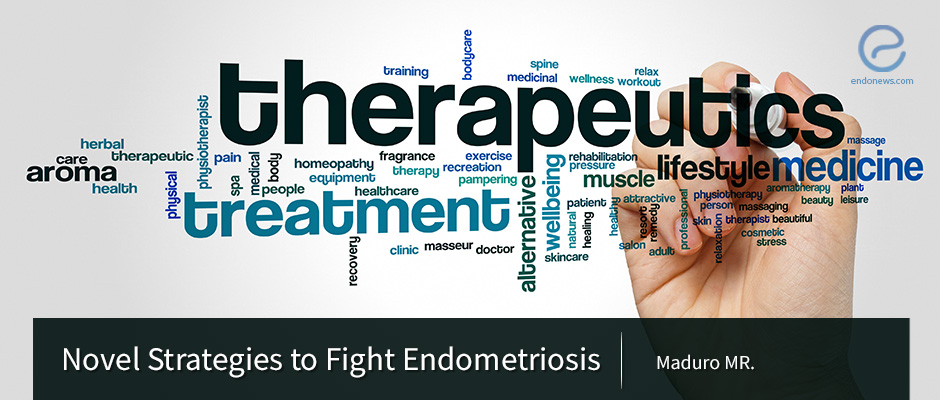Fighting with endometriosis
Sep 27, 2018
The better the endometriosis is understood, the more effective therapeutic strategies to fight the disease develop.
Key Points
Highlights:
- A better understanding of endometriosis is important for the development of more efficient and safer new therapeutic strategies to fight this disease.
What's done here:
- Maduro M.R. reviewed the reports of three independent groups which investigate the potential new targets to successfully manage endometriosis.
Key Results:
- To minimize endometriosis symptoms, multimodal complementary therapies that reduce stress in the management of the disease can be an effective and safe approach.
- Trichostatin A-induced apoptosis in human endometriotic stromal cells is suggested to be up-regulated by non-steroidal anti-inflammatory drug-activated gene-1. The apoptotic pathway in human endometriosis creates potential targets for the development of new therapies.
- Increased expression of UGT1A1 [a key uridine diphospho-glucuronosyltransferase (UGT) for estrogen glucuronidation] in endometriotic lesions versus endometria might be related to the impairment of regulatory mechanisms, in response to a highly estrogenic environment, and this enzyme may be a novel target for therapy.
Lay Summary
Maduro M.R. reviewed three separate studies on potential new targets to successfully manage endometriosis in her recent paper titled “Novel Strategies to Fight Endometriosis” published in the journal Reproductive Sciences.
In the autotransplantation rat model of Torres-Reveron et al., the rats were exposed to environmental enrichment (EE) (endo-EE, toys and nesting materials, 4 rats per cage, larger enclosed area) or no enrichment (endo-NE, 2 rats per cage) from postnatal day 21 and after 8 weeks performed sham surgery or induced surgical endometriosis by suturing the uterine horn tissue next to the intestinal mesentery and then allowed progression for 2 months. At the time of sacrifice, the authors measured anxiety behaviors, collected endometriotic vesicles and uterus, and processed for quantitative real-time PCR for corticotropin-releasing hormone (CRH), urocortin-1, CRH-receptors type 1 and type 2 (CRHR1; CRHR2) and glucocorticoid receptor (GR). Anxiety-like behaviors were not found to be affected by endometriosis. The rats in the EE group showed lower basal anxiety behaviors than the ones in the NE group. The number and size of endometriosis vesicles were reduced in the endo-EE group compared to the endo-NE group. The authors further observed that endometriosis increased CRH and GR in the vesicles of endo-NE but not in the endo-EE. The use of multimodal complementary therapies that reduce stress in the management of endometriosis may be effective in minimizing symptoms.
According to the study of Lee et al. trichostatin A-induced apoptosis in human endometriotic stromal cells is up-regulated by non-steroidal anti-inflammatory drug-activated gene-1. Their findings help to elucidate the apoptotic pathway in human endometriosis which creates potential targets for the development of new therapies.
In the study of Piccinato et al. which aimed to understand the role of estrogen-metabolizing enzymes in endometriosis, greater levels of mRNA expression of a key uridine diphospho-glucuronosyltransferase (UGT) for estrogen glucuronidation were observed in deep-infiltrating endometriotic lesions and in non-deep-infiltrating lesions than in either control endometrium or in eutopic endometrium from women with endometriosis. UGT1A1 protein expression was greater in deep-infiltrating endometriotic lesions as compared to non-deep-infiltrating ones. UGT1A1 protein expression was found to be significantly higher in samples from endometriotic lesions than in regular endometria. Authors suggested that increased expression of UGT1A1 in lesions versus endometria might be related to an impairment in the regulatory mechanisms, in response to a highly estrogenic environment. Their findings show that UGT1A1 may be a promising new target for endometriosis therapy.
Research Source: https://www.ncbi.nlm.nih.gov/pubmed/30126347
endometriosis endometrium endometriosis therapy new therapeutics managing endometriosis environmental enrichment trichostatin A uridine diphospho-glucuronosyltransferase

